Dental implant systems consist of a dental implant body, abutment and crown. The implant fixture is surgically inserted in the jawbone in place of the tooth's root. After the implant, we must wait for healing for a few months for “osseointegration” to occur, which is a scientific term for bone ingrowth onto the implant. After osseointegration takes place, the dentist can get started on restoring the implant. The implant abutment is attached to the implant body by a screw and extends through the gums to support the crown of the tooth.
Through utilizing implants, replacing one single tooth or an entire arch (many teeth) is possible.
Implants can also be utilized to attach dentures to increase retention which decreases movement significantly
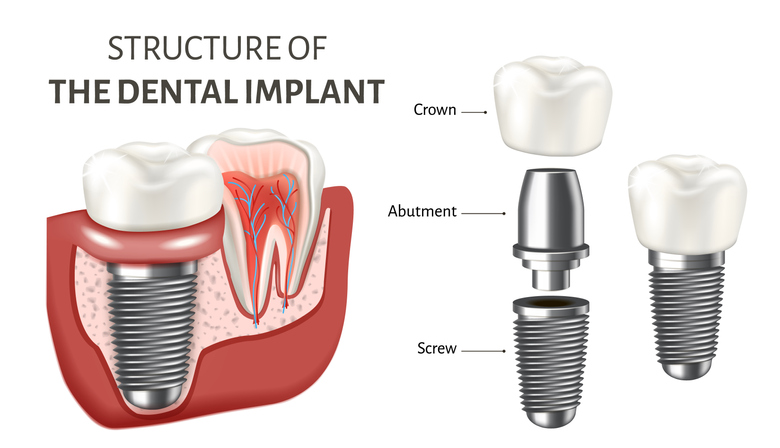
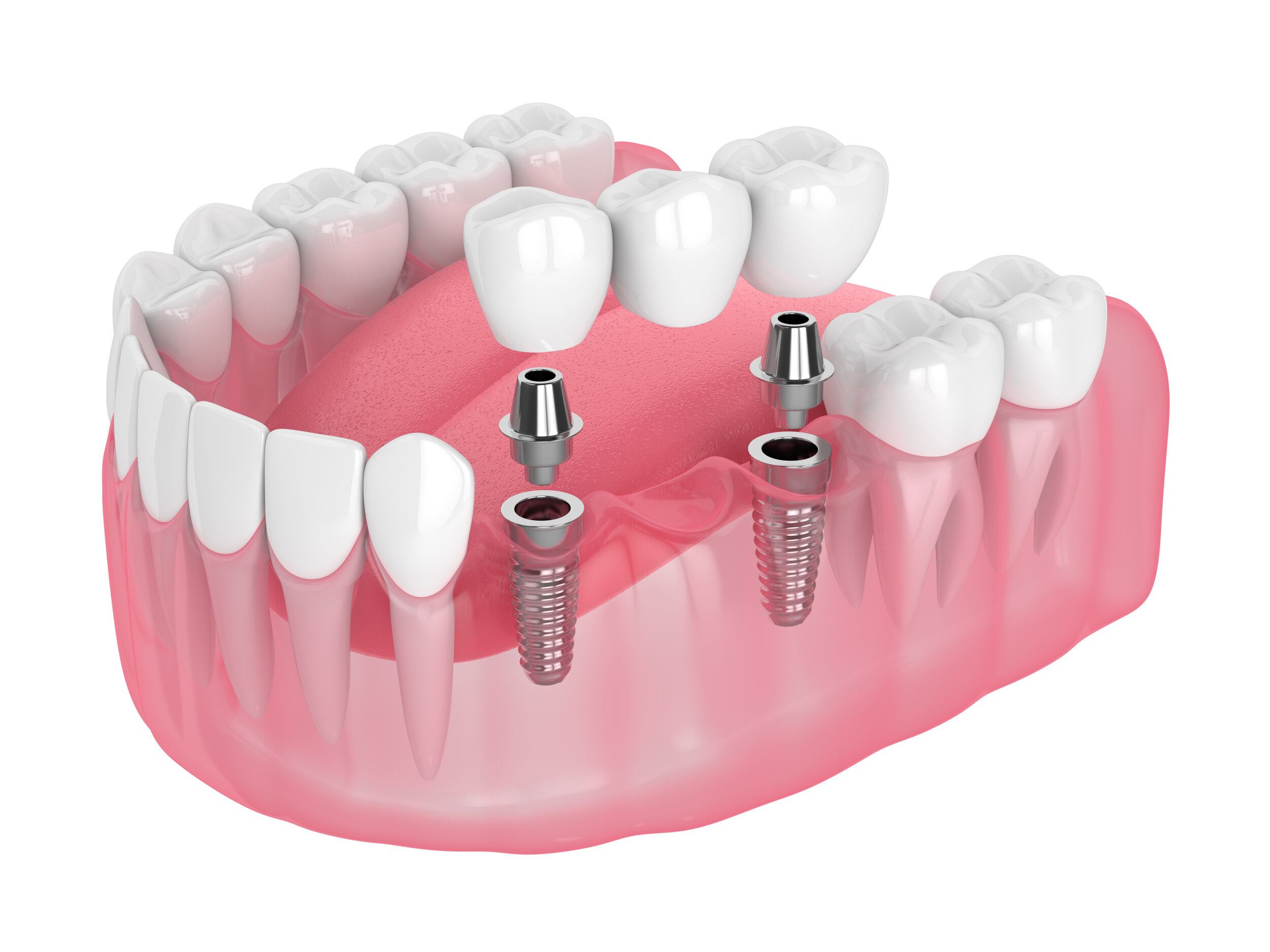
Other implantology services provided include:
- Single Tooth Replacement
- Fixed Implant Bridge
- Implant Supported Denture
Crowns: A crown is a porcelain structure that mimics the size and color of natural teeth to protect teeth that are broken down. When there is too much tooth structure missing from a natural tooth, the tooth is significantly weakened. In order to prevent fracture, a crown is placed on top of the tooth and cemented permanently.
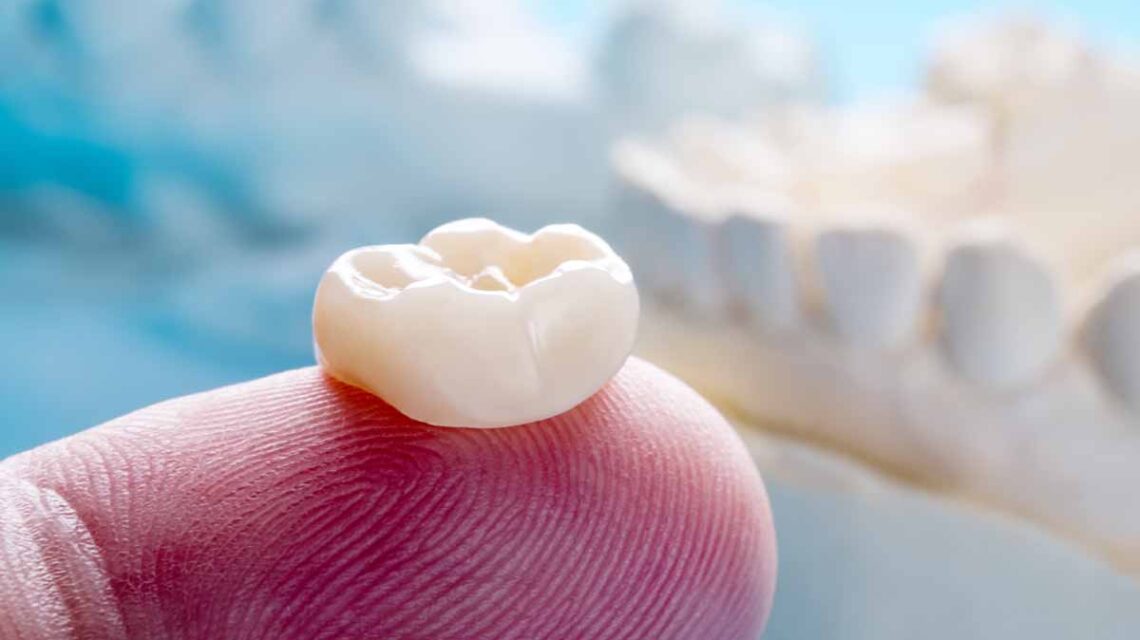
Bridge: Bridges are used to replace teeth that are missing. By shaving down the two adjacent teeth, the missing tooth is attached to the teeth that are shaved down.
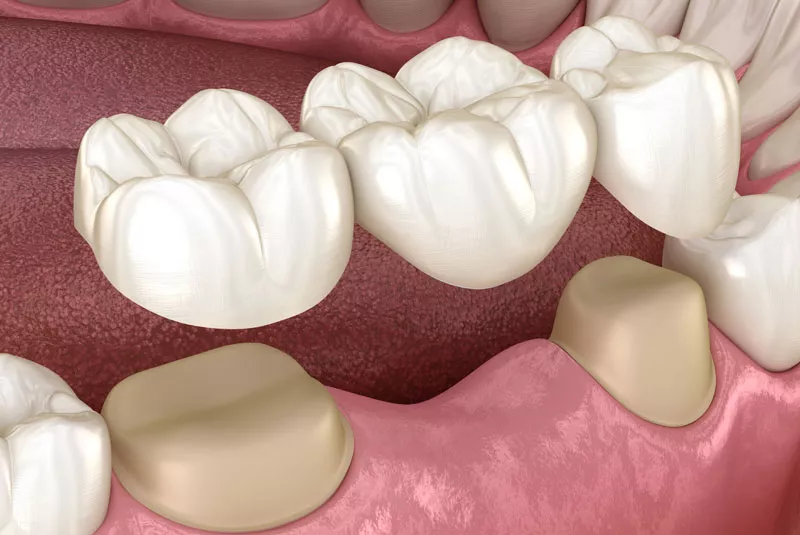
Veneers: Veneers are porcelain lab fabricated teeth, that are most commonly used to change the shape and size of existing natural teeth.
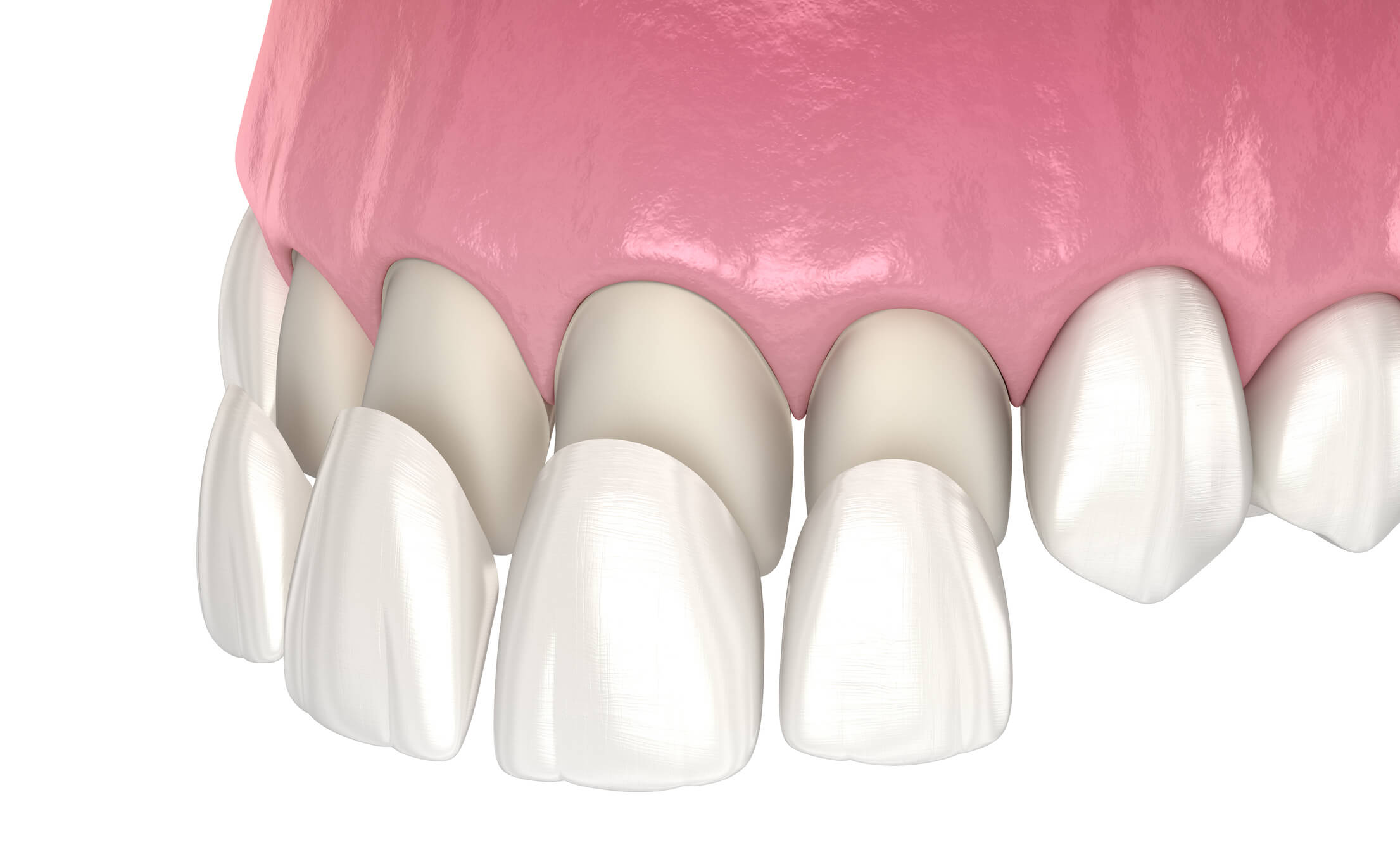
Complete and Partial Denture: Complete and partial dentures are utilized to replace one or all teeth in the mouth. If there are existing healthy teeth in the mouth, clasps that act as hooks latch on to the existing teeth to stabilize it from moving and falling out. If there are no teeth, the acrylic suctions onto the gums to create stability.
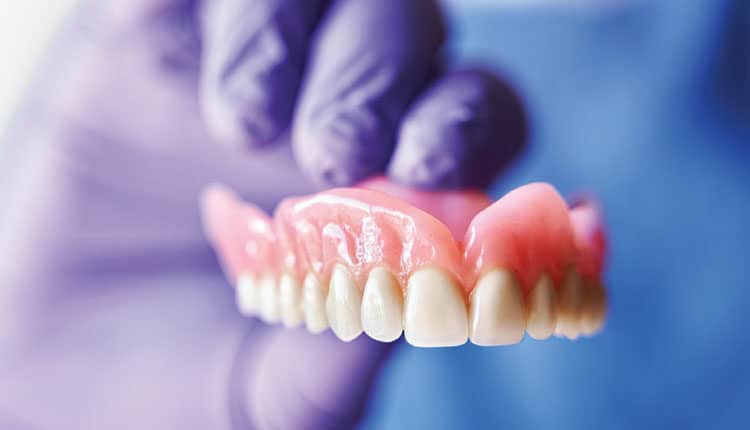
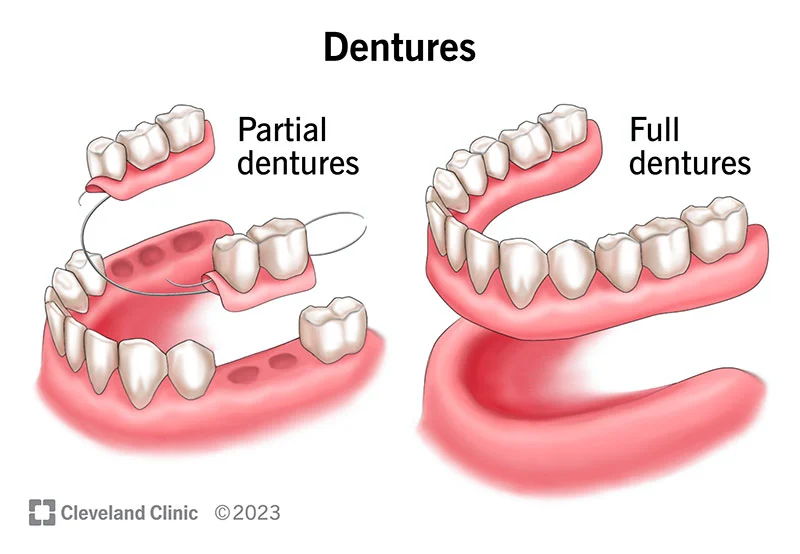
Orthdontic Aligners: Clear aligners are an alternative to traditional braces, which help guide teeth to move. The advantage of this form of orthodontics is the aesthetics and form of placement. Because they are clear trays, all the user has to do is wear them consistently to correct and improve teeth alignment.
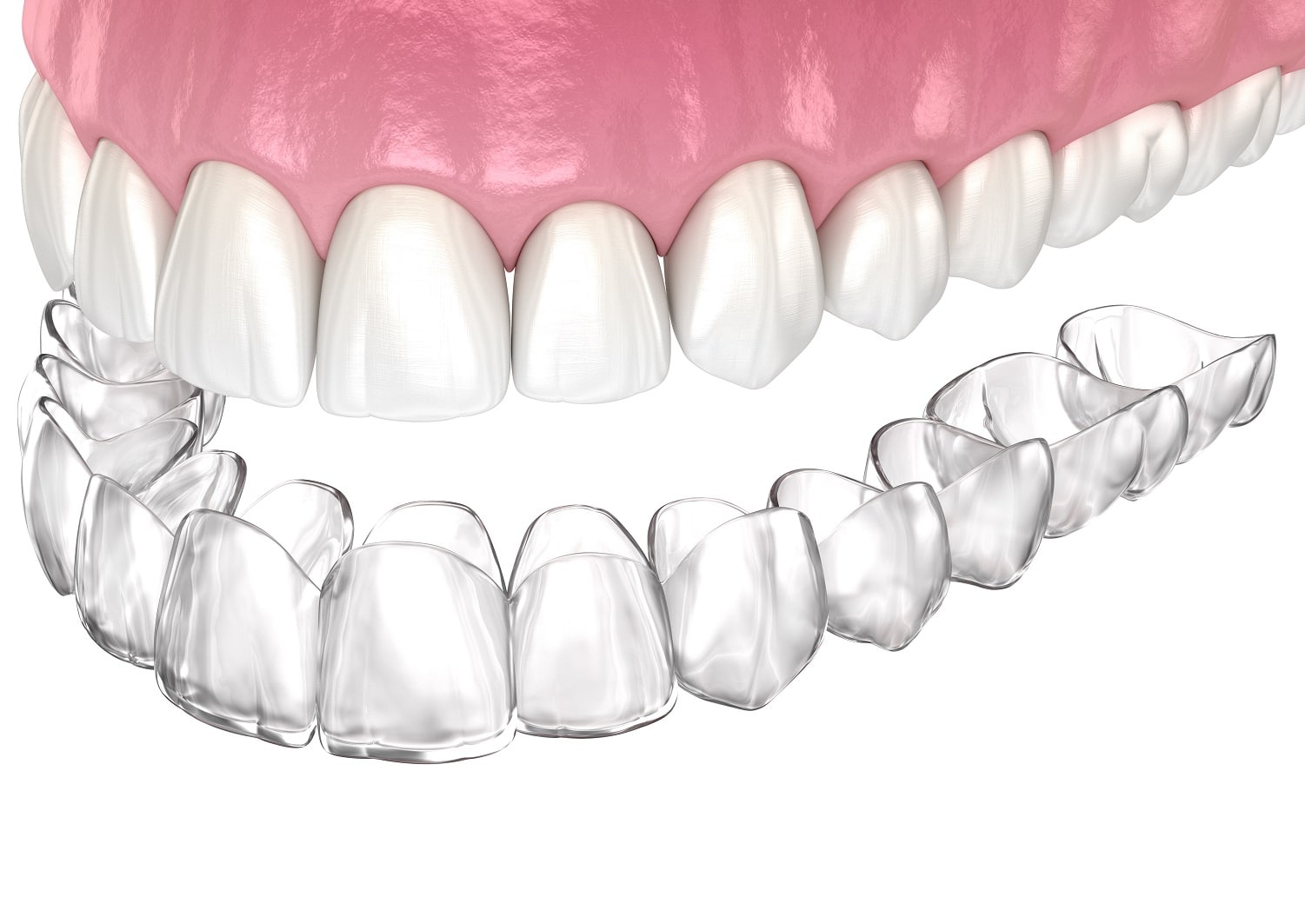
Root Canal Therapy: When a tooth nerve is infected, common signs are pain, irritation, and swelling. Every tooth has a nerve that is alive within the center. If any foreign body comes close to the nerve, your brain processes it as pain. In order to remove the infection that is present within the tooth or nerve, a root canal is medically necessary to save the tooth. In order to reach the infection that is within the tooth, the nerve of the tooth is removed with instruments and then it is decontaminated.
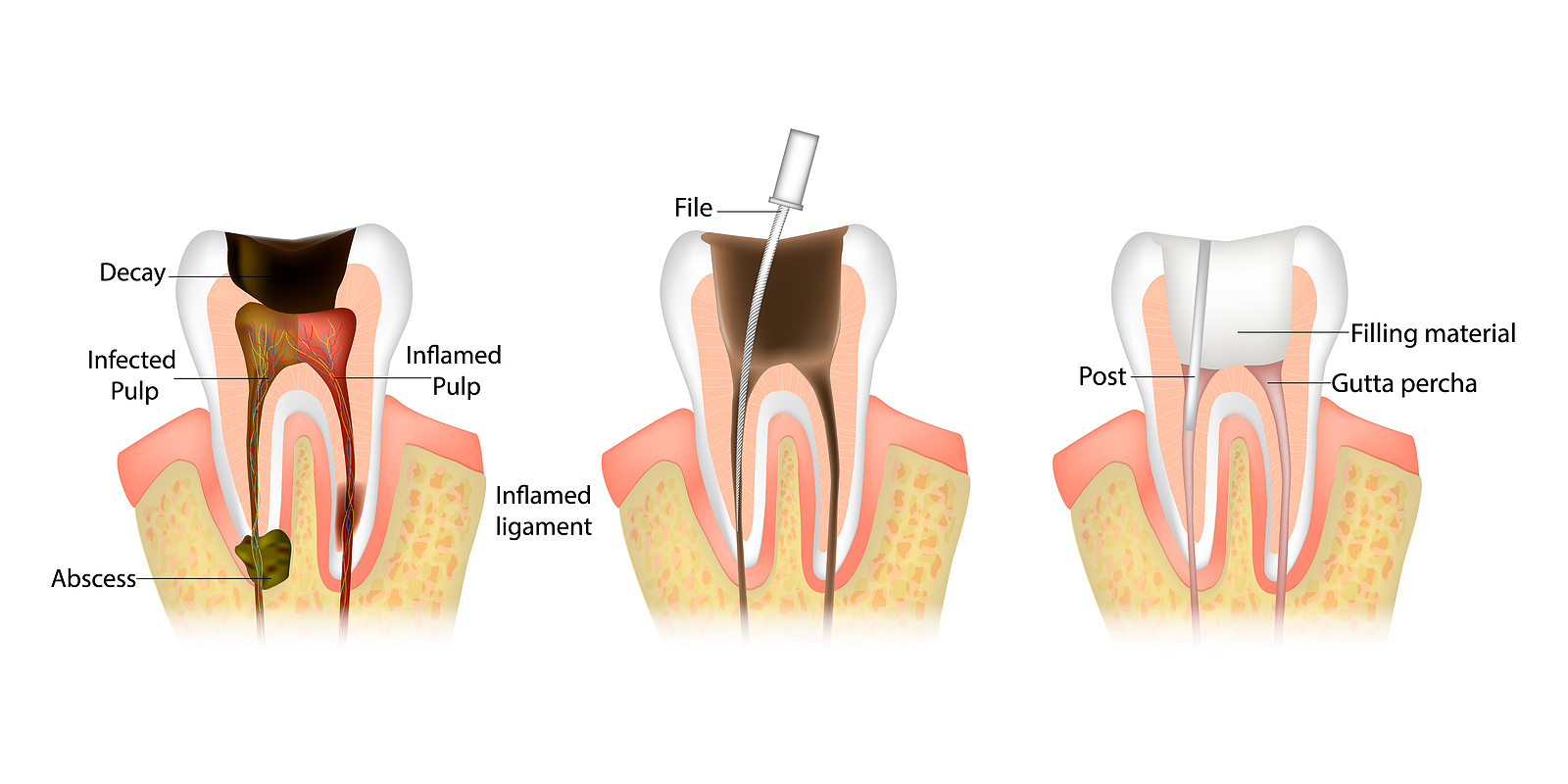
Bonding: Bonding is a tooth-colored filling material that is used to replace parts of a tooth. After removing a cavity from the tooth, to replace the missing tooth structure, a composite shade or bonding that matches the natural tooth color is added.
Inlay & Onlay: Inlays and onlays are an alternative option to fill cavities after they are drilled out. Most commonly used after an old bonding fails to conserve tooth structure. An inlay & onlay is fabricated commonly with porcelain or gold and is cemented in as one piece. The largest benefit is that the inlay & onlay is indirectly cemented as one piece to conserve tooth structure, as well as receive the benefits of strength and long term success.
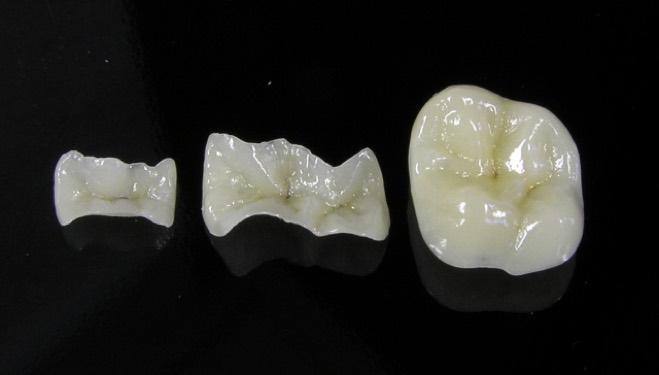
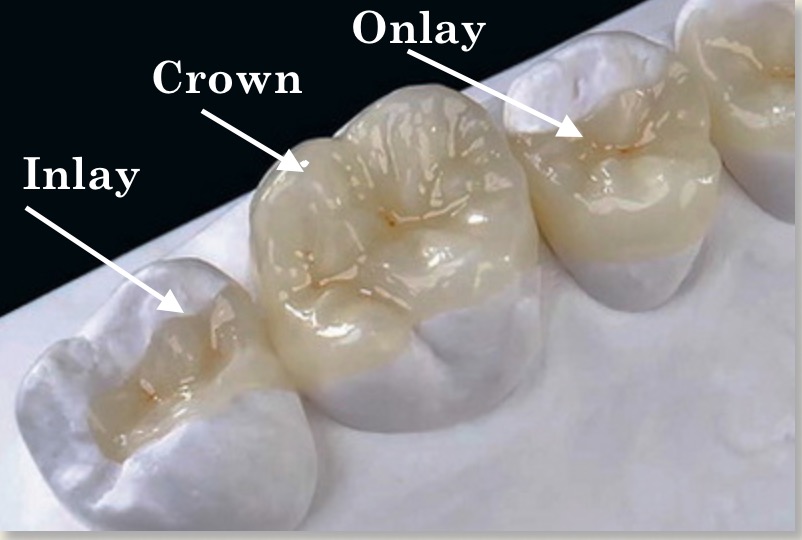
- Everyone has plaque and bacteria build up on their teeth and gums. In order to maintain healthy teeth, it is recommended to brush twice a day and floss daily. Although brushing and flossing can provide an adequate job, it may be impossible to remove all the plaque buildup on teeth. Using a cavitron, an ultrasonic scaling system, and hand scalers every 6 months, the dentist is able to clean all teeth and gums to prevent gum inflammation and cavities.
- Deep Scaling & Root Planing: If plaque and calculus is left alone on teeth for an extended amount of time, calculus can accrue beneath the gum line causing gingivitis (gum inflammation) and potentially periodontitis (bone loss).
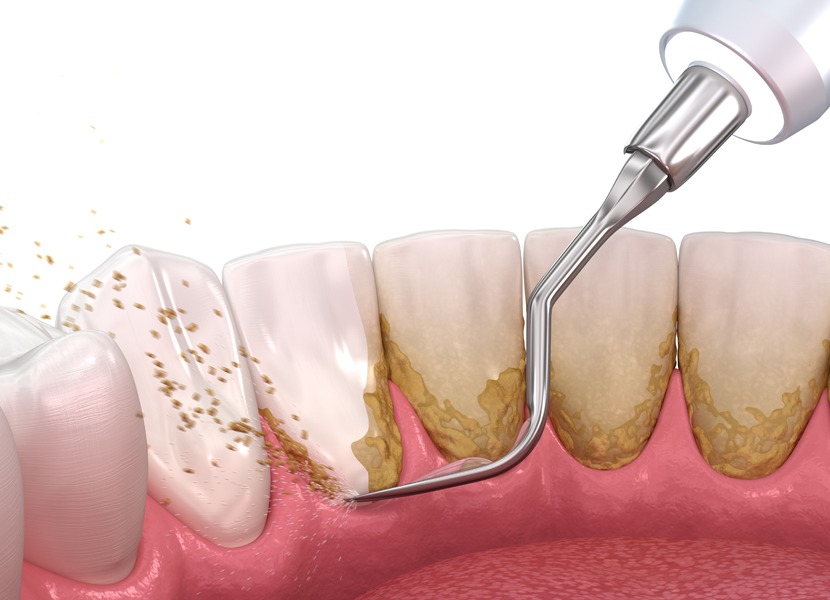
- Children as young as 1 year old should visit the dentist to get used to the environment and meet the dentist. This will allow children to grow up to feel more comfortable and have a relationship with them. Starting children off with exams in the chair with their parents provides a safe space for the children.
- As the child grows primary teeth, Dr. Choi will be able to clinically inspect and clean them. By creating this habit early on, children will only be more comfortable visiting the dentist as they get older. Early prevention of any oral cavities and gingivitis will lead the child to a healthier state as they age.
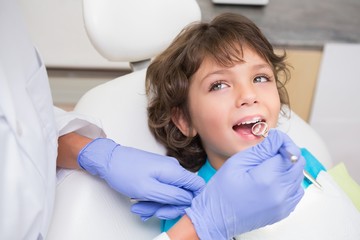
Our in house teeth whitening system will allow you to see results immediately. Three applications within twenty minutes is all we need which will be completed in 1 visit. By placing professional grade hydrogen peroxide directly on the teeth, it will remove all deep stains and lighten your natural teeth color.
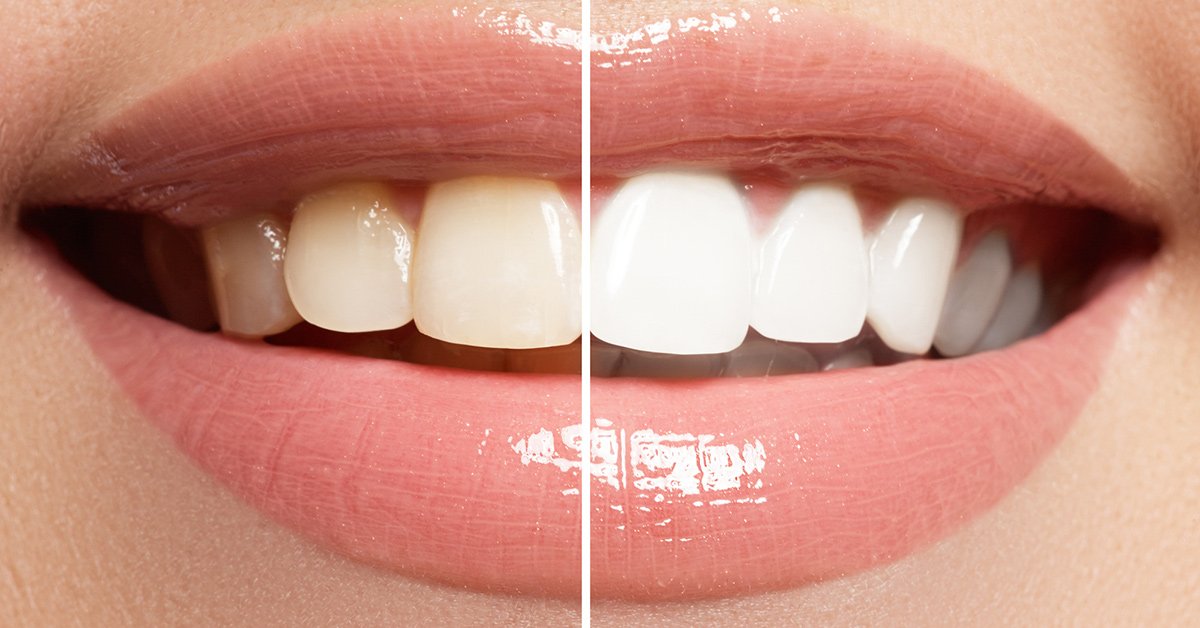
Night Guard: Night guards are commonly used for people who grind and clench their teeth. Teeth grinding is a multifactorial issue, most commonly related to stress. Constant grinding can cause enamel to wear reducing the size of natural teeth. In order to protect the teeth, wearing a night guard will protect the existing enamel, dentin, and temporomandibular joint from degradation. By creating an environment to allow your teeth to grind freely, it will protect your existing teeth and create less friction and damage to your joint
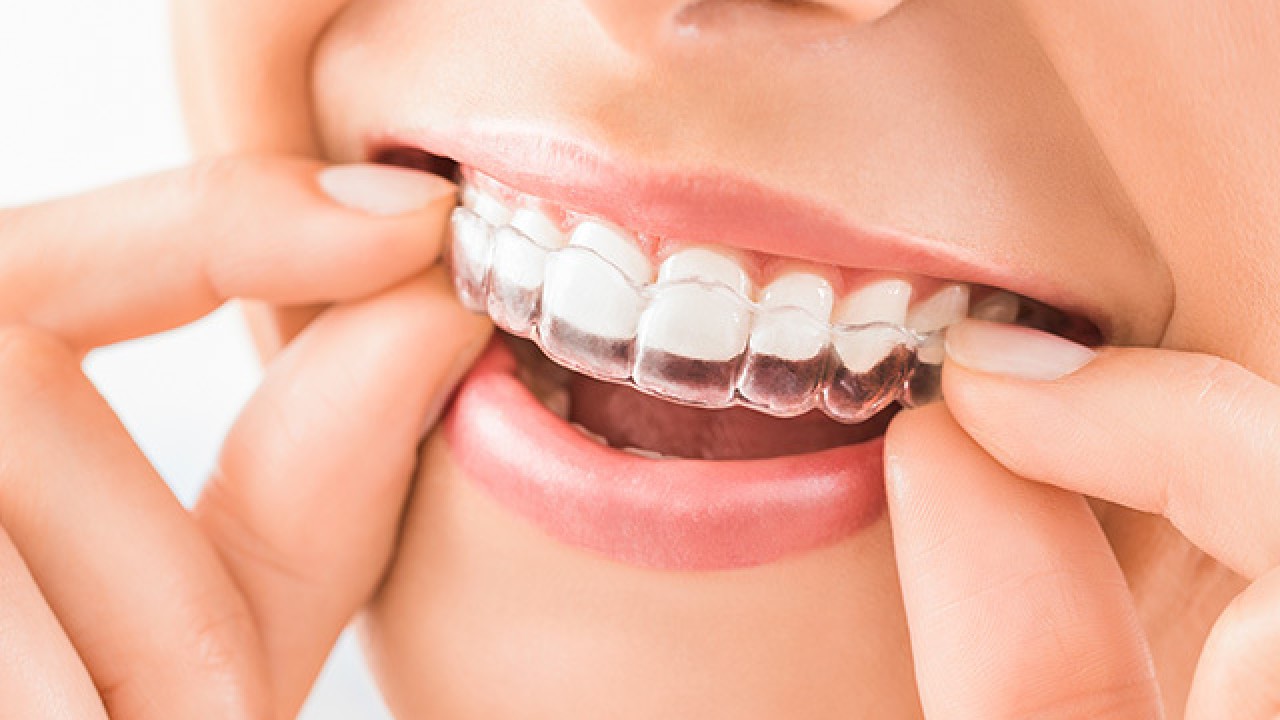
To be in the forefront of dentistry and all its technological advancements, Rooted Dental incorporates Digital Dental Scanners in their workflow. For decades dentists have been capturing impressions using impression material that expands and shrinks which causes crowns to not fit at times. Any one who has a gag reflex most likely experienced how tough it is to take an impression. Now with this scanner, you can now simply capture a video of what the mouth looks like with out any issues.With our digital scanner, we can now accurately capture an impression within minutes as well as have the most accurate crowns and veneers to be made.